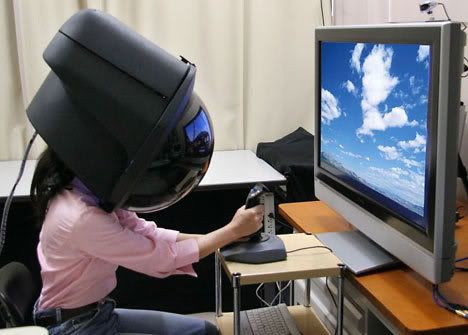Revealed: How eBay sellers fix auctions
Recorded excerpts of meetings with Paraskevaides: Clip 1 Clip 2
CUSTOMERS of the internet auction site eBay are being defrauded by unscrupulous dealers who secretly bid up the price of items on sale to boost profits.
An investigation by The Sunday Times has indicated that the practice of artificially driving up prices — known as shill bidding — is widespread across the site.
Last week one of the UK’s biggest eBay sellers admitted in a taped conversation with an undercover reporter that he was prepared to use business associates to bid on his goods for him.
Our inquiries found evidence that a number of businesses — ranging from overseas property agencies to car dealerships — have placed bids on their own items using fake identities.
The cases raise questions about whether eBay, the world’s biggest auction site, is doing enough to protect consumers.
Shill bidding is against eBay rules and is illegal under the 2006 Fraud Act. However, the resulting higher prices on the site boost the value of eBay’s share of the sales.
Last November eBay changed its rules to conceal bidders’ identity — making it even more difficult for customers to see whether sellers are bidding on their own lots. Since its launch seven years ago, eBay’s UK website has attracted more than 15m customers. It sells more than 10m items at any given time.
One of the beneficiaries of the boom is Eftis Paraskevaides, a former gynaecologist, from Cambridgeshire. He has become a “Titanium PowerSeller” — one of eBay’s handful of top earners — selling more than £1.4m worth of antiquities a year on the site.
In a conversation with an undercover reporter last week, Paraskevaides claimed shill bidding was commonplace on eBay.
When the reporter asked whether he arranged for associates to bid on his own items, he replied: “Well, if I put something really expensive (up for sale) and I was concerned that it was going for nothing, I would phone a friend of mine, even a client of mine who buys from me, and say: For Christ’s sake, I sell you 100 quids’ worth of items a week . . . just put two grand on it, will you?” The reporter was posing as a seller of valuable antiquities. He inquired whether Paraskevaides could sell them on eBay and guarantee a minimum price.
He replied: “Leave it to me (laughs). Don’t call it shill bidding. Then I won’t be accused of shill bidding. Yes. I mean — I’ve got people.
“I’ve got some of my big clients who buy big items off me, I look after them. So I can get on the phone to America and say: Mr XXXX . . . you’re a multi- millionaire. You buy a hundred grand’s worth off me a year. Do me a favour would you. Just put — yeah. Exactly.”
He claimed eBay would never follow up a complaint against him for shill bidding because he generated about £15,000 a month in commission for the company. “Are they going to ban somebody who’s making them the best part of 15 grand a month? No,” he said.
After being told that he had been talking to an undercover reporter, Paraskevaides denied that he had ever shill bidded on eBay and claimed he was talking about clients who sometimes bid on expensive items if they wished to protect the price.
However The Sunday Times discovered businesses that have been bidding on their own items. One leading dealer from London admitted last week that that he had shill bidded in the past.
A spokesman for eBay said he expected that the company would now launch an investigation into Paraskevaides. Anyone caught shill bidding risks a permanent ban.
The spokesman added: “The change to the way bidder IDs are shown has already resulted in a safer environment for users.”
CUSTOMERS of the internet auction site eBay are being defrauded by unscrupulous dealers who secretly bid up the price of items on sale to boost profits.
An investigation by The Sunday Times has indicated that the practice of artificially driving up prices — known as shill bidding — is widespread across the site.
Last week one of the UK’s biggest eBay sellers admitted in a taped conversation with an undercover reporter that he was prepared to use business associates to bid on his goods for him.
Our inquiries found evidence that a number of businesses — ranging from overseas property agencies to car dealerships — have placed bids on their own items using fake identities.
The cases raise questions about whether eBay, the world’s biggest auction site, is doing enough to protect consumers.
Shill bidding is against eBay rules and is illegal under the 2006 Fraud Act. However, the resulting higher prices on the site boost the value of eBay’s share of the sales.
Last November eBay changed its rules to conceal bidders’ identity — making it even more difficult for customers to see whether sellers are bidding on their own lots. Since its launch seven years ago, eBay’s UK website has attracted more than 15m customers. It sells more than 10m items at any given time.
One of the beneficiaries of the boom is Eftis Paraskevaides, a former gynaecologist, from Cambridgeshire. He has become a “Titanium PowerSeller” — one of eBay’s handful of top earners — selling more than £1.4m worth of antiquities a year on the site.
In a conversation with an undercover reporter last week, Paraskevaides claimed shill bidding was commonplace on eBay.
When the reporter asked whether he arranged for associates to bid on his own items, he replied: “Well, if I put something really expensive (up for sale) and I was concerned that it was going for nothing, I would phone a friend of mine, even a client of mine who buys from me, and say: For Christ’s sake, I sell you 100 quids’ worth of items a week . . . just put two grand on it, will you?” The reporter was posing as a seller of valuable antiquities. He inquired whether Paraskevaides could sell them on eBay and guarantee a minimum price.
He replied: “Leave it to me (laughs). Don’t call it shill bidding. Then I won’t be accused of shill bidding. Yes. I mean — I’ve got people.
“I’ve got some of my big clients who buy big items off me, I look after them. So I can get on the phone to America and say: Mr XXXX . . . you’re a multi- millionaire. You buy a hundred grand’s worth off me a year. Do me a favour would you. Just put — yeah. Exactly.”
He claimed eBay would never follow up a complaint against him for shill bidding because he generated about £15,000 a month in commission for the company. “Are they going to ban somebody who’s making them the best part of 15 grand a month? No,” he said.
After being told that he had been talking to an undercover reporter, Paraskevaides denied that he had ever shill bidded on eBay and claimed he was talking about clients who sometimes bid on expensive items if they wished to protect the price.
However The Sunday Times discovered businesses that have been bidding on their own items. One leading dealer from London admitted last week that that he had shill bidded in the past.
A spokesman for eBay said he expected that the company would now launch an investigation into Paraskevaides. Anyone caught shill bidding risks a permanent ban.
The spokesman added: “The change to the way bidder IDs are shown has already resulted in a safer environment for users.”






